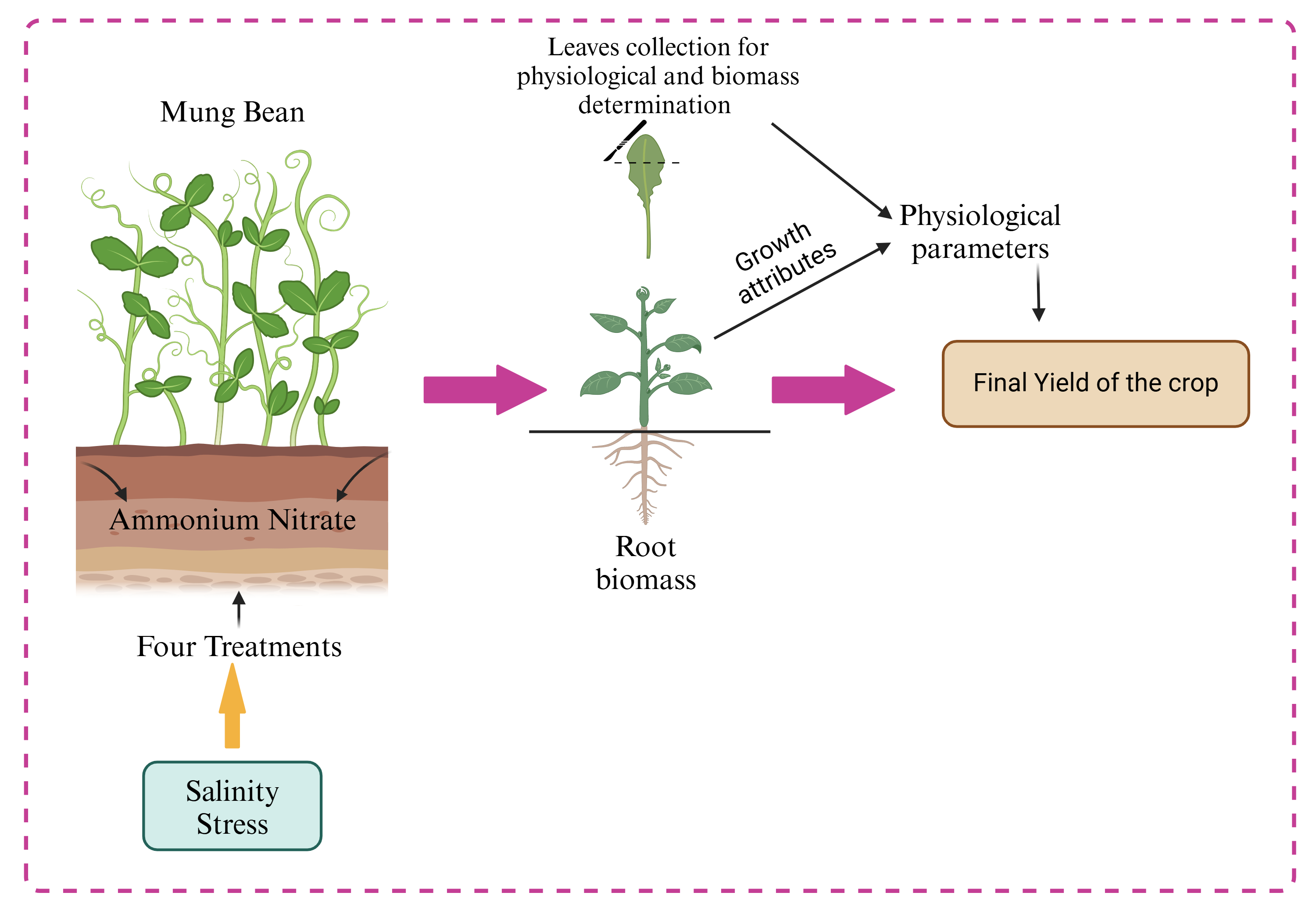
Mungbean is a key leguminous crop species highly regarded for its nutritious properties. However, soil salinity greatly reduced its growth and yield. Our study investigated whether applying exogenous nitrogen (N) (ammonium nitrate; AN) could improve salinity tolerance in mungbean seedlings by supplementing them with N under different concentrations of NaCl stress. Results revealed that the increased NaCl stress levels significantly reduced shoot height, root length, fresh and dry weight, and chlorophyll pigment. In contrast, increased hydrogen peroxide (H2O2), malondialdehyde, organic solutes (soluble protein, proline, and soluble sugar), antioxidant enzymes, i.e., superoxide dismutase, ascorbate peroxidase, catalase, and peroxidase, and abscisic acid were significantly elevated. Jasmonic acid (JA) increased at 40 mM stress and decreased at 120 mM stress level. There was also a significant reduction in the concentration of cytokinin, indole acetic acid, and N-metabolizing enzymes, viz. nitrate reductase (NR) and glutamate synthase (GOGAT) activity. In contrast, N supplementation reduced H2O2 and MDA but improved chlorophyll levels, osmolytes, phytohormones, N assimilation potential, and enzymatic antioxidant activity. Exogenous N supplementation reduced the impairments by improving their growth and metabolism. Conclusively, AN application may provide an effective strategy for improving salinity tolerance and mitigating damage caused by salinity by modulating physiological responses.
Total file downloads: 28